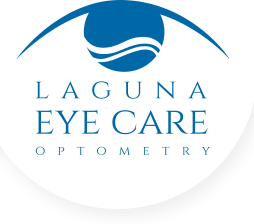Lazy Eye(Amblyopia)
Amblyopia or lazy eye is an abnormal visual development that causes poor vision in infancy and early childhood. Lazy eye can affect only one eye, in which case, the child depends solely on the good eye for vision. However, sometimes, both eyes are affected. If not treated, it can cause mild to severe loss of vision.
Causes
Lazy eye is caused when the nerves carrying information from the eye to the brain are impaired. Nerve pathway impairment can be caused due to eye problems including
- Strabismic amblyopia (crossed eye)develops when one eye turns in, out, up or down as opposed to the healthy eye
- Deprivation amblyopia develops due to the presence of cataract (clouding of the eyes’ lens) or other eye problems that deprive the visual experience
- Refractive amblyopia develops due to larger or unequal refractive error (inability of the eyes’ lens to focus leading to short-sightedness or long-sightedness)
When the brain gets a blurred image or the wrong image from the defective eye, it gets confused, and over time, favours only the healthy eye, ignoring signals from the weaker eye, which ultimately leads to poor vision.
Symptoms
Symptoms of lazy eye include eyes that wander in or out, or do not work in coordination, poor depth perception, and poor vision in one eye.
Diagnosis
Your doctor will conduct a complete eye examination to detect lazy eye. Your doctor will check for wandering eye, differences in vision or poor vision between both eyes, and conduct tests depending on your child’s age.
- Newborns: Your doctor will conduct a ‘red reflex test’ by using a lighted magnifying device (ophthalmoscope) to check for cataracts.
- Infants: Your doctor will check for the ability to fix and follow a moving object, and test for presence of strabismus.
- Toddlers: Your doctor will conduct pupillary red reflex test, remote autorefraction or photoscreening to detect refractive errors.
- Pre-schoolers and older children: Your doctor will use pictures or letters to test each eye by patching the other eye.
Your doctor will also check for presence of tumours, inflammation, and other inner eye troubles.
Treatment
Treatment for lazy eye begins in early childhood, and therapy options will depend on the cause and degree of lazy eye affecting your child’s vision. Conservative treatment options include:
- Corrective eyewear: Your doctor may suggest eye glasses or contact lenses for lazy eye that is caused due to near-sightedness (close objects are clear but distant objects appear blurred), farsightedness (distant objects are clear but close objects appear blurred) or astigmatism (blurred vision due to irregular curvature of the eye’s lens).
- Eye patches: An eye patch is used to cover the stronger eye so that the weaker eye is stimulated. Eye patch can be used for 3–6 hours per day for children >4 years old. This therapy helps the part of the brain that controls vision to develop completely.
- Eye drops: Eye drops are an alternative to patches and are instilled daily or twice-weekly into the stronger eye to temporarily blur vision and encourage the patient to use the weaker eye.
Spectacles or contact lens may be all that your child needs to correct lazy eye. Patches and drops are ineffective if the stronger eye is near-sighted. Your doctor may suggest other active therapies like puzzles, drawing, or computer games in addition to eye patch or eye drops.
Surgery: Your doctor will recommend surgical repair of the eye muscles if the eyes are crossed or wander apart. Surgery will also be required to correct drooping eyelids or cataract.
Improvement of vision in lazy eye patients may take several weeks to months. Better results and vision improvements are seen if the treatment for lazy eye beings early during childhood. Early diagnosis and treatment improves the chances of complete recovery. Treatment may take longer or be less effective if lazy eye is not diagnosed until pre-teen, teen or adult years.
